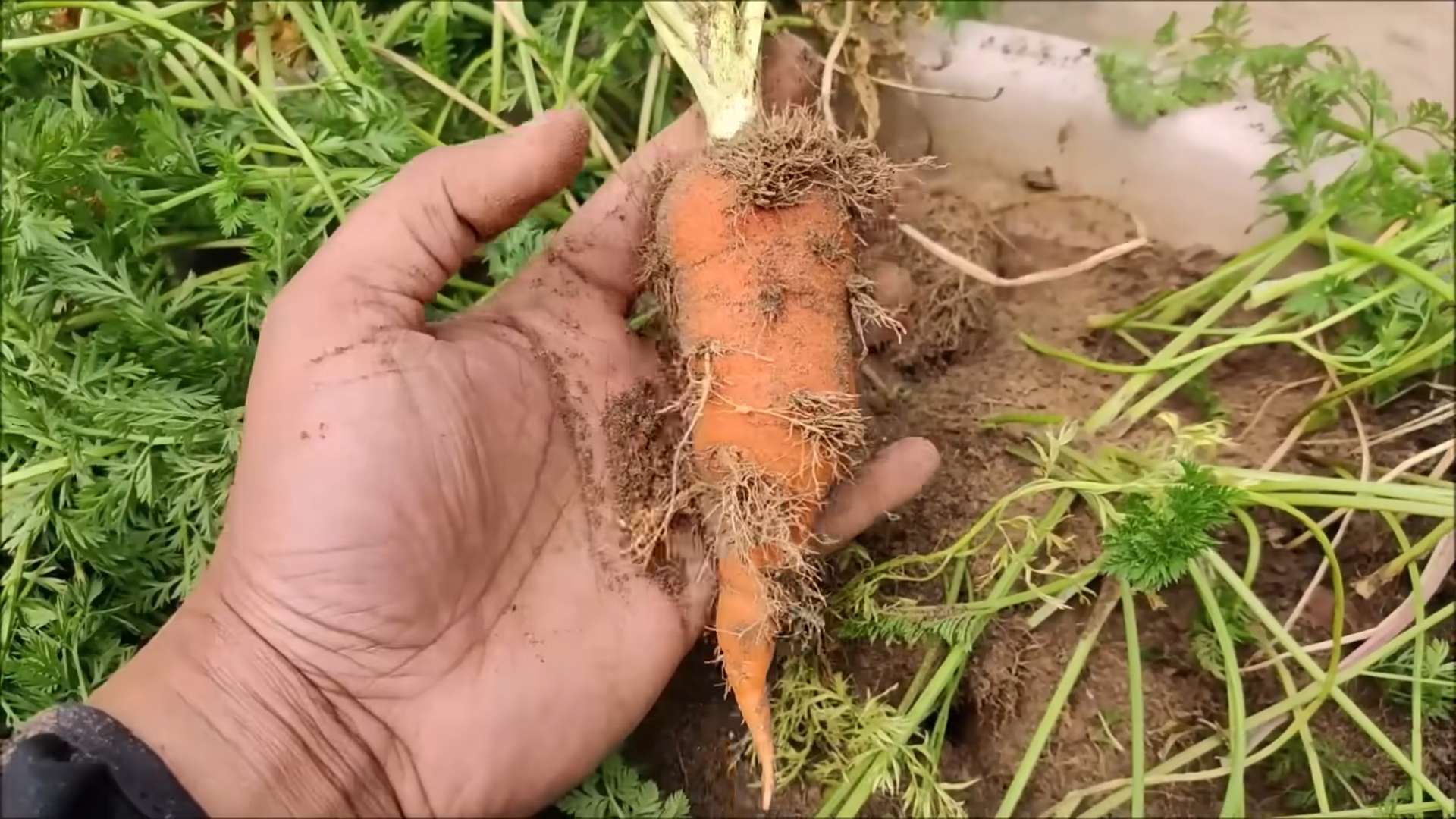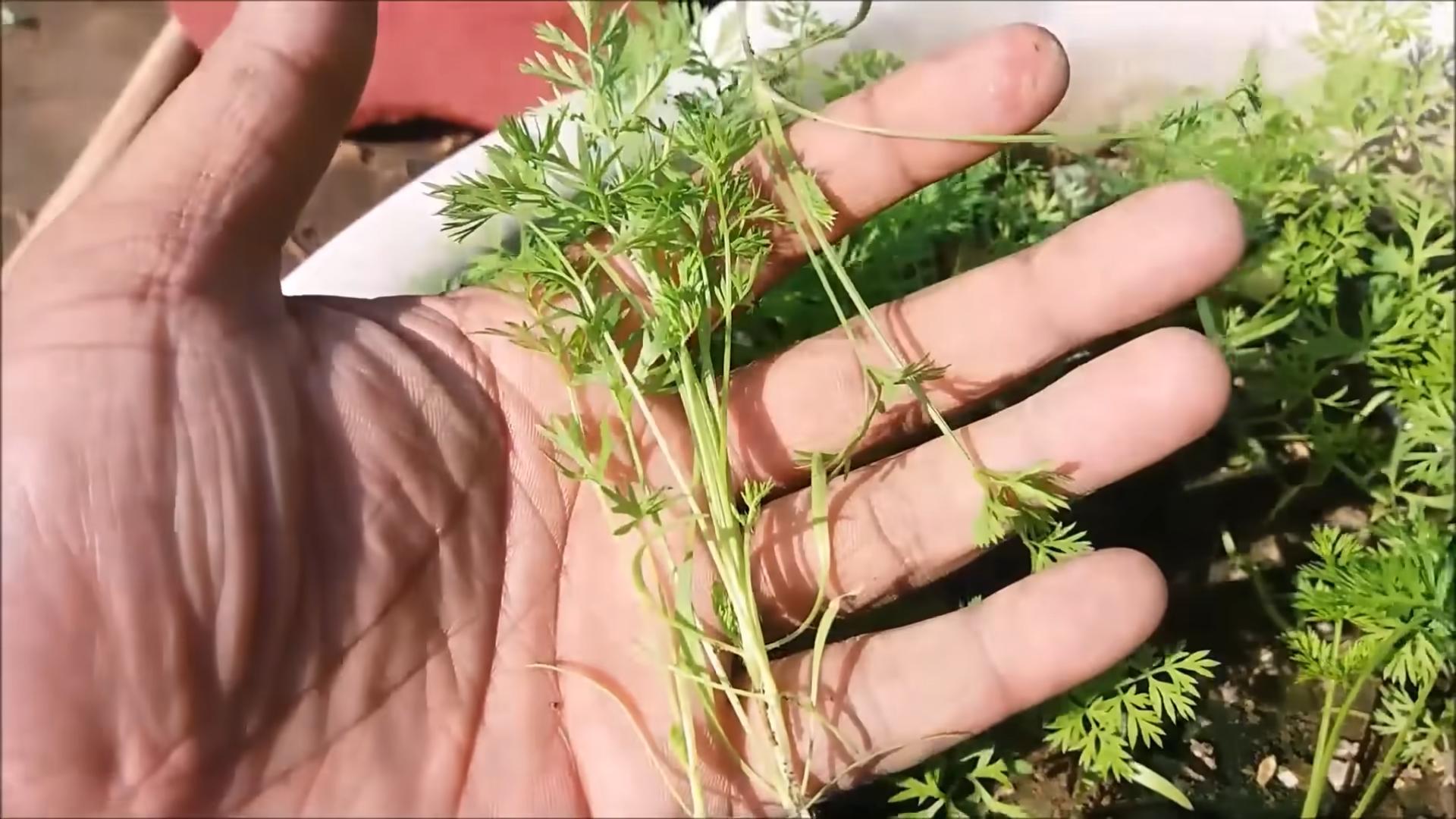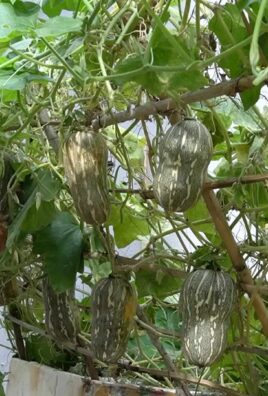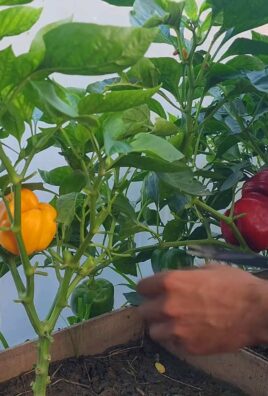Growing French Beans can seem daunting, but trust me, it’s easier than you think! Have you ever dreamt of stepping into your backyard and harvesting fresh, crisp beans for dinner? Imagine the satisfaction of knowing exactly where your food comes from and the joy of sharing your homegrown bounty with friends and family. This isn’t just about gardening; it’s about connecting with nature and nourishing yourself with the fruits (or, in this case, vegetables!) of your labor.
The history of bean cultivation stretches back millennia, with evidence suggesting they were a staple food in ancient civilizations across the globe. From the Incas to the Romans, beans have sustained and nourished communities for generations. Today, we’re bringing that tradition home, making it accessible to everyone, regardless of their gardening experience.
So, why do you need these DIY tricks and hacks for growing French Beans? Well, let’s face it, gardening can be tricky. Pests, diseases, and unpredictable weather can all throw a wrench in your plans. But with a few clever tips and tricks, you can overcome these challenges and enjoy a thriving bean patch. I’m here to share my tried-and-true methods, making the process simple, fun, and rewarding. Get ready to roll up your sleeves and discover the secrets to a bountiful bean harvest!

DIY: From Seed to Sprout – Growing Your Own Delicious French Beans!
Hey there, fellow gardening enthusiasts! I’m so excited to share my tried-and-true method for growing French beans right in your own backyard (or even on your balcony!). There’s nothing quite like the taste of freshly picked, homegrown beans, and trust me, it’s easier than you think. Let’s get our hands dirty!
What You’ll Need: The Essential Supplies
Before we dive in, let’s gather everything we need. This will make the whole process smoother and more enjoyable.
* French Bean Seeds: Choose your favorite variety! I personally love ‘Blue Lake’ for its reliable yield and delicious flavor, but there are tons of options like ‘Provider’ (early maturing) or ‘Kentucky Wonder’ (pole bean).
* Well-Draining Soil: French beans aren’t too picky, but they thrive in soil that’s rich in organic matter and drains well. You can amend your existing soil with compost or well-rotted manure.
* Gardening Gloves: Protect those precious hands!
* Trowel or Garden Fork: For digging and preparing the soil.
* Watering Can or Hose: Essential for keeping your beans hydrated.
* Fertilizer (Optional): A balanced fertilizer can give your beans a boost, but it’s not strictly necessary if your soil is already healthy. I like to use a slow-release organic fertilizer.
* Support Structure (For Pole Beans): If you’re growing pole beans, you’ll need a trellis, stakes, or a teepee for them to climb on.
* Mulch (Optional): Mulch helps retain moisture, suppress weeds, and regulate soil temperature. Straw, wood chips, or shredded leaves work great.
* Pest Control (Optional): Keep an eye out for common bean pests like aphids or bean beetles. Insecticidal soap or neem oil can be used if needed.
Phase 1: Preparing the Soil – Laying the Foundation for Success
The key to happy beans is happy soil! Here’s how I get my garden bed ready:
1. Choose a Sunny Spot: French beans need at least 6-8 hours of sunlight per day. Pick a location in your garden that gets plenty of sunshine.
2. Clear the Area: Remove any weeds, rocks, or debris from the planting area.
3. Loosen the Soil: Use a garden fork or trowel to loosen the soil to a depth of about 12 inches. This will make it easier for the bean roots to grow.
4. Amend the Soil: Incorporate compost or well-rotted manure into the soil. This will improve drainage, add nutrients, and create a healthy environment for your beans. I usually add a generous layer, about 2-3 inches thick, and mix it in thoroughly.
5. Level the Surface: Rake the soil to create a smooth, even surface. This will make planting easier and ensure that the beans receive even watering.
Phase 2: Planting the Seeds – Bringing Your Beans to Life
Now for the fun part – planting the seeds!
1. Check the Last Frost Date: French beans are sensitive to frost, so it’s important to wait until after the last expected frost in your area before planting. You can find this information online or from your local garden center.
2. Direct Sowing: French beans are best sown directly into the garden. They don’t transplant well, so starting them indoors is generally not recommended.
3. Planting Depth: Sow the seeds about 1 inch deep.
4. Spacing: For bush beans, space the seeds about 2-4 inches apart in rows that are 18-24 inches apart. For pole beans, space the seeds about 4-6 inches apart at the base of your support structure.
5. Water Gently: After planting, water the soil gently to moisten it. Be careful not to overwater, as this can cause the seeds to rot.
6. Mark the Rows: Use plant markers or labels to identify the rows of beans. This will help you keep track of what you’ve planted and avoid accidentally weeding them out.
Phase 3: Providing Support (For Pole Beans) – Helping Them Reach for the Sky
If you’re growing pole beans, they’ll need a support structure to climb on. Here are a few options:
1. Trellis: A trellis is a sturdy structure made of wood, metal, or plastic that provides a vertical surface for the beans to climb. You can buy a pre-made trellis or build your own.
2. Stakes: Individual stakes can be used to support each bean plant. Simply insert a stake into the ground next to each plant and tie the bean stem to the stake as it grows.
3. Teepee: A teepee is a fun and attractive way to support pole beans. Simply arrange several stakes in a circle and tie them together at the top to form a teepee shape. Plant the beans around the base of the teepee.
Installing the Support:
* Before Planting: It’s best to install the support structure before planting the beans. This will avoid disturbing the roots later on.
* Securely Anchored: Make sure the support structure is securely anchored in the ground to prevent it from falling over.
* Guiding the Vines: As the bean vines grow, gently guide them onto the support structure. They will eventually start to climb on their own.
Phase 4: Caring for Your Beans – Nurturing Your Crop
Once your beans are planted, it’s important to provide them with the care they need to thrive.
1. Watering: Water your beans regularly, especially during dry weather. Aim to keep the soil consistently moist, but not waterlogged. I usually water deeply once or twice a week, depending on the weather.
2. Weeding: Keep the area around your beans free of weeds. Weeds compete with the beans for water and nutrients. Hand-pulling weeds is the best option, as it avoids damaging the bean plants.
3. Fertilizing (Optional): If your soil is poor, you can fertilize your beans with a balanced fertilizer. Follow the instructions on the fertilizer package. I prefer to use a slow-release organic fertilizer, which provides a steady supply of nutrients over time.
4. Mulching (Optional): Apply a layer of mulch around your beans to help retain moisture, suppress weeds, and regulate soil temperature. Straw, wood chips, or shredded leaves work great.
5. Pest Control: Keep an eye out for common bean pests like aphids or bean beetles. If you notice any pests, you can treat them with insecticidal soap or neem oil. Always follow the instructions on the product label. I usually check my plants every few days for any signs of pests.
6. Supporting the Vines (For Pole Beans): As the pole beans grow, continue to guide the vines onto the support structure. You may need to tie them to the support with twine or plant ties.
Phase 5: Harvesting Your Beans – The Sweet Reward
The moment we’ve all been waiting for – harvesting your delicious French beans!
1. Harvest Time: French beans are typically ready to harvest about 50-60 days after planting.
2. Picking the Beans: Pick the beans when they are young and tender, before the seeds inside become too large. The pods should be firm and snap easily when bent.
3. Regular Harvesting: Harvest your beans regularly to encourage continued production. The more you pick, the more beans the plant will produce.
4. Gentle Handling: Handle the beans gently to avoid bruising them.
5. Storage: Freshly picked French beans are best eaten right away. However, you can store them in the refrigerator for a few days. To store them, place them in a plastic bag or container and keep them in the crisper drawer.
6. Enjoy Your Harvest: Savor the taste of your homegrown French beans! They’re delicious steamed, sautéed, or added to salads and soups.
Troubleshooting: Common Issues and Solutions
Even with the best care, you might encounter a few challenges along the way. Here are some common issues and how to address them:
* Poor Germination: If your bean seeds aren’t germinating, it could be due to several factors, such as cold soil, overwatering, or old seeds. Make sure the soil is warm enough (at least 60°F), avoid overwatering, and use fresh seeds.
* Yellowing Leaves: Yellowing leaves can indicate a nutrient deficiency, overwatering, or a pest infestation. Check the soil drainage, fertilize if necessary, and inspect the plants for pests.
* Pest Infestations: Aphids, bean beetles, and other pests can damage your bean plants. Treat infestations with insecticidal soap or neem

Conclusion
So, there you have it! Growing French beans at home, especially using our simple DIY trick, is not just a gardening project; it’s an investment in fresh, flavorful meals and a rewarding connection with nature. We’ve shown you how to bypass some of the common pitfalls and maximize your yield, even if you’re working with limited space or a less-than-perfect climate.
Why is this DIY method a must-try? Because it simplifies the process, making it accessible to even the most novice gardener. By focusing on soil preparation, support structures, and consistent watering, you’re setting your French beans up for success from the very beginning. The satisfaction of harvesting your own crisp, tender beans, knowing you nurtured them from seed to table, is truly unparalleled. Plus, you’ll be enjoying beans that are far fresher and more flavorful than anything you can buy at the store.
But don’t stop there! Feel free to experiment with different varieties of French beans. Bush beans are great for containers and smaller gardens, while pole beans offer a higher yield and can be trained to climb trellises or fences, creating a beautiful and productive green screen. Consider companion planting to further enhance your garden’s health. Marigolds can deter pests, while nasturtiums attract beneficial insects. You can also try succession planting, sowing new seeds every few weeks, to ensure a continuous harvest throughout the growing season.
Another variation to consider is the growing medium itself. While we’ve emphasized the importance of well-draining soil, you can also explore hydroponic or aquaponic systems for growing French beans. These methods can be particularly effective in urban environments where soil quality is a concern. Just remember to adjust your nutrient solutions accordingly.
Ultimately, the best way to learn is by doing. Don’t be afraid to get your hands dirty, experiment with different techniques, and adapt our DIY trick to suit your specific needs and environment. The beauty of gardening is that there’s always something new to discover.
We are confident that with a little effort and our guidance, you’ll be enjoying a bountiful harvest of delicious French beans in no time. We encourage you to give this DIY trick a try and share your experiences with us! Let us know what worked well for you, what challenges you encountered, and any tips or tricks you discovered along the way. Your feedback will not only help us improve our guide but also inspire other gardeners to embark on their own French bean growing adventures. Share your photos and stories on our social media channels using #HomeGrownFrenchBeans. We can’t wait to see your success! Happy gardening!
Frequently Asked Questions (FAQ)
What is the best time of year to plant French beans?
French beans are warm-season crops, so the best time to plant them is after the last frost when the soil has warmed up to at least 60°F (15°C). In most regions, this is typically in late spring or early summer. You can start seeds indoors a few weeks before the last frost to get a head start, but be sure to harden them off before transplanting them outdoors. For a continuous harvest, consider succession planting, sowing new seeds every 2-3 weeks throughout the growing season.
How much sunlight do French beans need?
French beans need at least 6-8 hours of direct sunlight per day to thrive. Choose a planting location that receives plenty of sunlight throughout the day. If you’re growing them in containers, you can move them around to ensure they get enough sun. Insufficient sunlight can lead to leggy growth and reduced yields.
What kind of soil is best for growing French beans?
French beans prefer well-draining soil that is rich in organic matter. The ideal soil pH is between 6.0 and 7.0. Before planting, amend the soil with compost or well-rotted manure to improve its fertility and drainage. Avoid heavy clay soils, as they can become waterlogged and hinder root growth. If you have clay soil, consider adding sand or perlite to improve drainage.
How often should I water my French beans?
French beans need consistent moisture, especially during flowering and pod development. Water deeply and regularly, aiming for about 1 inch of water per week. Avoid overhead watering, as this can promote fungal diseases. Instead, water at the base of the plants. Mulching around the plants can help retain moisture and suppress weeds. Check the soil moisture regularly and adjust your watering schedule accordingly, depending on the weather conditions.
Do French beans need support?
Whether or not French beans need support depends on the variety. Bush beans are compact and generally don’t require support. However, pole beans are climbing varieties and need a trellis, fence, or other support structure to grow properly. Provide support at the time of planting to encourage upward growth. The support should be sturdy enough to withstand the weight of the mature plants and the developing pods.
What are some common pests and diseases that affect French beans?
Common pests that affect French beans include aphids, bean beetles, slugs, and spider mites. Diseases include bean rust, powdery mildew, and anthracnose. Regularly inspect your plants for signs of pests or diseases. Use organic pest control methods, such as insecticidal soap or neem oil, to control pests. Ensure good air circulation to prevent fungal diseases. Remove any infected leaves or plants promptly to prevent the spread of disease. Crop rotation can also help reduce the risk of soilborne diseases.
How do I know when my French beans are ready to harvest?
French beans are typically ready to harvest about 50-60 days after planting. The pods should be firm, crisp, and tender, and the beans inside should be small and immature. Harvest regularly to encourage continued production. Overripe beans will be tough and stringy. Snap the beans off the plant carefully to avoid damaging the stems.
Can I grow French beans in containers?
Yes, French beans can be grown successfully in containers, especially bush bean varieties. Choose a container that is at least 12 inches deep and wide. Use a well-draining potting mix and ensure the container has drainage holes. Place the container in a sunny location and water regularly. You may need to fertilize container-grown beans more frequently than those grown in the ground.
How can I improve the yield of my French bean plants?
To improve the yield of your French bean plants, ensure they receive adequate sunlight, water, and nutrients. Amend the soil with compost or well-rotted manure before planting. Provide support for pole bean varieties. Harvest regularly to encourage continued production. Consider using a fertilizer specifically formulated for beans or legumes. Companion planting with beneficial plants, such as marigolds or nasturtiums, can also help improve yield.
Can I save seeds from my French bean plants?
Yes, you can save seeds from your French bean plants, but only if they are open-pollinated varieties. Allow some of the pods to mature fully on the plant until they are dry and brown. Shell the beans and allow them to dry completely before storing them in an airtight container in a cool, dark place. Label the container with the variety and date. Note that seeds saved from hybrid varieties may not produce plants that are true to type.




Leave a Comment